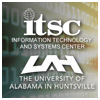Event-Driven Data Delivery (ED3) Technologies for Severe Weather Research, GHRC Innovations: Moving Technology from Research to Production
| Title | Event-Driven Data Delivery (ED3) Technologies for Severe Weather Research, GHRC Innovations: Moving Technology from Research to Production |
| Publication Type | Poster |
| Year of Publication | 2014 |
| Authors | Graves, S, Keiser, K, Conover, H, Ramachandran, R, Maskey, M, Kulkarni, A |
| Conference | ESIP 2014 Winter Meeting |
| Date Published | 01/2014 |
| Conference Location | Washington DC |
| Keywords | Disaster Preparedness, ED3, GHRC Innovations |
| Abstract | Event-driven data delivery (ED3) is being used to automate the access, generation and processing of data in response to targeted events through the use of a cyber framework consisting of event listeners, subscription database and handling of data workflows. ED3 allows users and systems to create plans consisting of any data workflow that can then be executed when a matching event occurs, triggering the execution of the defined workflow. Data Albums are functional containers that are populated with data relevant to a specified event, defined spatially and temporally, and collected from all possible sources - data repositories, social media sites, etc. Data Albums can be living documents that continue to accumulate event data as it becomes available. ED3 and Data Albums are complementary, in that ED3 provides the event listening and generation of the temporal and spatial constraints necessary for the generation of a Data Album. The usability component is then technology from the Collaborative Workbench (CWB) project that provide scientist toolbox functionality through the management of data granules in a science project notebook paradigm, allowing scientist to organize and analyze data related to a specific project in an online research environment. Data Albums provides a natural event-specific container of data products that researchers can use to populate their CWB experiment/project without having to otherwise perform tedious searches for event-relevant data and then capture the information in their experiment. The Global Hydrology Resource Center (GHRC) is prototyping the integration of technology from several NASA-funded research projects into capabilities that could eventually be deployed for the benefit of Earth science researchers and users. Through support for many science missions, research projects and data products, the GHRC has become a focal point for data supporting severe weather events. Focusing on severe weather, technology from several projects are being brought together within the GHRC Innovations Lab with the goal of providing an integrated approach of collecting, delivering and utilizing data related to severe weather events for researchers and other users. An ongoing Science on Drupal project is guiding the integration of all of this technology into the Drupal content management system structure to ultimately allow for better integration with other systems and environments. This is a concerted effort, through the GHRC Innovations Lab, to integrate technologies from these initially separate research projects, eventually, into a production data center environment in such a way that could be re-used by other centers or systems. ED3 is funded by the NASA’s Applied Science Program, Frank Lindsay as program manager . The project team includes Sara Graves, Udaysankar Nair and Ken Keiser. Data Albums is funded by NASA’s ACCESS program with Steve Berrick as program manager, and project team of Rahul Ramachandran, Ajinkya Kulkarni, Scott Braun, Michael Goodman, Brad Zavodsky, and Brian Wilson. CWB is funded by the AIST Computational Modeling, Algorithms and Cyberinfrastructure Program, managed by Tsengdar Lee. The project team includes Rahul Ramachandran, Chris Lynnes Kwo-Sen Kuo, Simone Tanelli and Manil Maskey. |
| URL | http://www.itsc.uah.edu/main/sites/default/files/ED3%2Bfor-ESIP-Jan-2014-v2_sm.png |
- Log in to post comments
- Google Scholar




